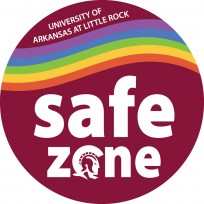Universal design is a concept that has emerged from the architectural field and is now being applied in other arenas such as instruction. The term “universal design” was defined by the team of architects, environmental researchers, engineers and product designers who are credited with its origin. They define universal design as “the design of products and environments to be usable by all people, to the greatest extent possible, without the need for adaptation or specialized design.” This same team of professionals developed a set of seven principles which guide designers in the development of products and environments to maximize usability and accessibility. Learn more about Universal Design for Instruction and Learning Environments.
The Principles of Universal Design
- Equitable Use – The design is useful and marketable to people with diverse abilities.
- Flexibility in Use – The design accommodates a wide range of individual preferences and abilities.
- Simple and Intuitive Use – Use of the design is easy to understand, regardless of the user’s experience, knowledge, language skills, or current concentration level.
- Perceptible Information – The design communicates necessary information effectively to the user, regardless of ambient conditions or the user’s sensory abilities.
- Tolerance for Error – The design minimizes hazards and the adverse consequences of accidental or unintended actions.
- Low Physical Effort – The design can be used efficiently and comfortably and with a minimum of fatigue.
- Size and Space for Approach and Use– Appropriate size and space is provided for approach, reach, manipulation, and use regardless of user’s body size, posture, or mobility.
Source: North Carolina State University, Center for Universal Design.
Many of us recognize that architectural features designed to benefit people with disabilities are advantageous to everyone. Lowered water fountains, for example, allow children to get a drink without assistance. Ramps are more convenient when we are pulling luggage or moving equipment. The same phenomenon has occurred with newer technology. Cell phones equipped to send digital messages provide accessibility for people who are deaf, but are also convenient if you are in a meeting or in a noisy environment. These are examples of the principles of universal design in action.
More recently, efforts are being made to develop and apply this concept in educational settings. One of the pioneers of this effort was Frank Bowe (1947 – 2007) . In his book, Universal Design in Education, he defines universal design as it applies to the educational setting as “the preparation of curriculum, materials and environments so that they may be used appropriately and with ease, by a wide variety of people.” Many educators have embraced the concept of universal design because its application enhances instruction for all students. It changes the emphasis from “special features for a few” to “good design for many.”
Adopting universal design as a framework within which to plan our services, construct physical spaces, deliver instruction, and organize academic programs will result in a more welcoming and inclusive campus climate.
Universal Design and Disability Services
The accommodation model of disability services is currently the most prevalent model in the postsecondary setting. Many disability service professionals would defend this model as a social model approach. When we explore it closely and compare it to the universal design approach, it is clear that it is more aligned with medical model thinking.
| Accommodation Approach | Universal Design Approach |
|---|---|
| Access is a problem for the individual and should be addressed by that person and the disability service program | Access issues stem from inaccessible, poorly designed environments and should be addressed by the designer |
| Access is achieved through accommodations and/or retrofitting existing requirements | The system/environment is designed, to the greatest extent possible, to be usable by all |
| Access is retroactive | Access is proactive |
| Access is often provided in a separate location or through special treatment | Access is inclusive |
| Access must be reconsidered each time a new individual uses the system, i.e. is consumable | Access, as part of the environmental design, is sustainable |
Source: AHEAD Universal Design Initiative Team
This realization, for many disability service providers, results in a recognition that a paradigm shift must occur in the DRC office before it can occur across the campus. One way to approach this paradigm shift is to engage in a strategic planning process. The UA Little Rock DRC has been implementing this paradigm shift since about 2006. In Spring 2013 we laid out a strategic plan that flowed from our stated core values, and we created a vision statement for the department as well. The mission statement of the UA Little Rock DRC is the basis from which we operate, so that we always have an eye not just accessibility but full inclusion and good design for the benefit of everyone.
